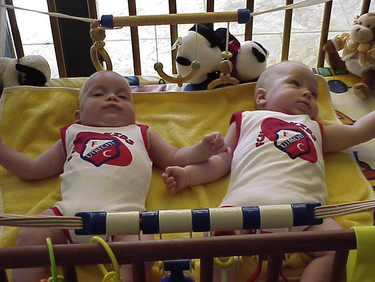Chapter 15 How does sexuality develop?
Sexual identity and behaviour are fundamental in the development of the person and the relevant influences are diverse and complex. The nature of sexuality is such that it has an important effect on health and well-being, and in turn is strongly influenced by these factors.
Gender identity
Social and cultural influences
Psychological influences on gender start at birth, where in the UK traditionally we dress baby boys in blue and girls in pink. Also our interactions are determined by the perceived sex of the baby, which we often only notice when babies are dressed non-gender-specifically (Fig. 1). We have expectations of boys and girls from a very young age, which may include playing more ‘rough and tumble’ games with boys, and more talking and cuddling with girls. This process quickly extends to peers, school and the media. It is thought that a core gender identity is fixed by about the age of 4 years.
Cultural pressures may delay the acceptance of sexual identity, since in many societies variations from the norm are not accepted. It may take a long period of adjustment and considerable courage to ‘come out’, accepting one’s own sexuality and letting others know. Fear of one’s sexuality being discovered may lead to secretive or reclusive lifestyles, and can be the source of enormous distress. Social norms are changing: witness the changes in the media’s (see pp. 52–53
Stay updated, free articles. Join our Telegram channel

Full access? Get Clinical Tree



